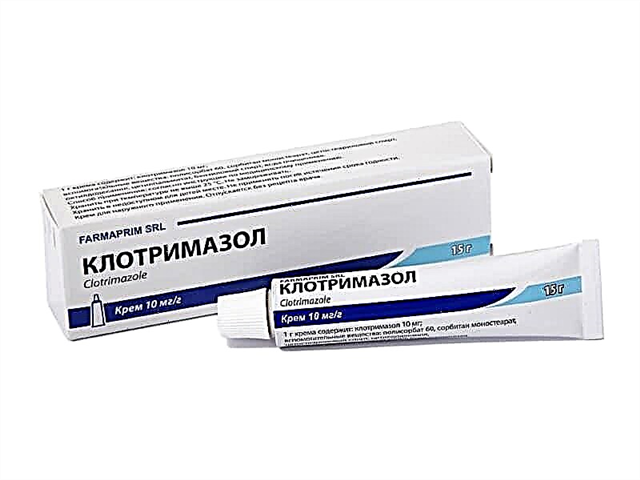After the birth of children, many different kinds of processes take place in their bodies that contribute to the adaptation of the child to life outside the womb. One of the laboratory indicators that attracts attention in children after birth is bilirubin. Further, the mechanisms of formation, its removal from the body will be considered, and the norms of bilirubin in newborns will also be presented.
Bilirubin in the blood of a newborn
What is bilirubin
Bilirubin is a bile pigment. It gives color to bile.
Where is it formed and how is it excreted from the body
Bilirubin is a product into which iron-containing proteins in our body, such as hemoglobin and cytochromes, are broken down. If we consider the pathway of cleavage of hemoglobin, then the following substances are formed: verdoglobin, then biliverdin, then bilirubin. This happens as a result of the action of a system of phagocytic mononuclear cells, for example, in the spleen.
When 1 g of hemoglobin breaks down, 34 milligrams of bilirubin is formed.
Bilirubin circulates in blood plasma together with albumin. In this form, it is called free (indirect)... Then, with the blood stream, it is brought to the liver. In the liver, the process of conjugation (binding) with glucuronic acid takes place. This form with acid is called conjugated (linked, direct) bilirubin... Then it enters the bile duct and bile.
Thus, bilirubin enters the intestines, where, under the influence of intestinal microflora, it turns into mesobilirubin... Further, it can turn into urobilinogen and excreted in the urine. Another way is education stercobilinogen, which is excreted with feces. All these substances give color to the biological material with which they are excreted from the body.
Do not confuse bilirubin with stercobilinogen and urobilinogen. The presence of bilirubin in urine is a clear sign of a pathological condition.

Causes of high levels of bilirubin in newborns
In newborns, in the process of adaptation of the body, for the first days of life, an excessive excretion of steroid hormones, for example, estrogens, occurs. The way of their inactivation is the same as that of bilirubin. Estrogens are transported to the liver and conjugated to glucuronic acid. Due to the fact that the liver is "busy" with the inactivation of another substance, bilirubin accumulates in the child's body, which leads to the so-called physiological jaundice of newborns.
In addition, fetal hemoglobin is less resistant to fluctuations in blood pH. Immediately after birth, there is a massive destruction of fetal (fruit) hemoglobin with its replacement by a more stable "adult" form, which also significantly increases the level of bilirubin in the body.
What fits into the concept of "norm"
Physiological jaundice persists for 3 - 5 days, the level of bilirubin completely returns to normal after 10 - 14 days. The level of free bilirubin rises. The norm of bilirubin in newborns will be presented below.
Free bilirubin has a toxic effect on the central nervous system. Therefore, it is important to note due to which fraction the increase in total bilirubin in the blood occurs.
What are the conditions for an excessive increase in bilirubin in newborns?
Increased bilirubin levels can be normal in physiological jaundice of newborns. Bilirubin levels will also be elevated in premature babies.
In addition, high levels of bilirubin may indicate an increased breakdown of hemoglobin caused by various factors, for example, as a result of hemolytic anemia, with Rh-conflict or thalassemia.
If bilirubin does not return to normal, this may indicate the presence of any liver pathology, toxic effects or an infectious agent.
Why is an excessive increase in the level of bilirubin in the blood of newborns dangerous?
As mentioned earlier, bilirubin has a toxic effect on cells in the nervous system, which can lead to neurological symptoms. Excessively high levels of bilirubin can lead to the development of nuclear jaundice - the nuclei of the brain are irreversibly affected, which leads to impaired development of the baby in the future.
How is a blood test done
A blood test for bilirubin requires venous or capillary blood.
Where does the blood come from
In connection with the anatomical and physiological characteristics of the child's body, in the first days of life, blood is taken from the heel. This small amount of blood is sufficient for testing.
What method is used to determine the level of bilirubin
To determine the level of bilirubin, a colorimetric method is used, that is, the color of the solution is directly proportional to the concentration of the substance in the blood.
Currently, the level of bilirubin is determined on automatic analyzers, which reduces the likelihood of erroneous determination of the level of the analyte in the blood.

Analysis decoding
The norm of bilirubin in newborns by day of life
At birth, the norm of bilirubin in the child's blood reaches 50-60 μmol / l. Then its level can rise by 3-7 days. By 1 month, the bilirubin content reaches the normal level for adults. The norm of bilirubin in newborns is presented in the table below.
Table. The norm of bilirubin in a month-old baby.
| Age | Norm |
| 1 day | 50 - 60 μmol / l |
| 2 days | 25 - 150 μmol / l |
| 3 - 5 days | 26 - 205 μmol / l |
| 6 days | Not more than 70 μmol / l |
| 1 month | 8.5 - 20.5 μmol / l |
Achievement of a bilirubin level of more than 240 μmol / L (170 μmol / L in premature babies) is a sign of the presence of pathology in the child's body, it is urgent to look for the cause until serious disorders in the nervous system have developed.
What methods in the hospital reduce the level of bilirubin in the blood of newborns
Bilirubin has such a peculiarity: in sunlight, its content in the body decreases. It is used to accelerate the decline in bilirubin in children. They are placed under an ultraviolet light.
Drugs can be prescribed that bind and remove bilirubin, activate the liver.
In especially severe cases, if bilirubin continues to rise and there is a risk of brain damage (hemolytic disease), a noticeable blood transfusion is used.

Recommendations for parents after discharge
If your child has high levels of bilirubin, you should not switch to formula for feeding in the first six months.
Also, doctors advise walking with the child in the fresh air. Ultraviolet light will fulfill its function of reducing the bilirubin in the blood. They, if necessary, prescribe drugs that activate the liver and excrete bilirubin.
If, when re-donating blood for bilirubin, its value has not reached the norm by 2 months, this indicates an obvious pathology. Therefore, you should consult a doctor for a full examination.
Conclusion
It is important for parents to monitor the level of bilirubin in the blood of children, not to be afraid of high numbers at birth, to observe changes in the indicator over time in some cases. High bilirubin numbers may indicate the development of parenchymal and hemolytic jaundice, which requires a special approach to treatment in each case. Don't miss the opportunity to help your child while it is still possible.
Article rating:



